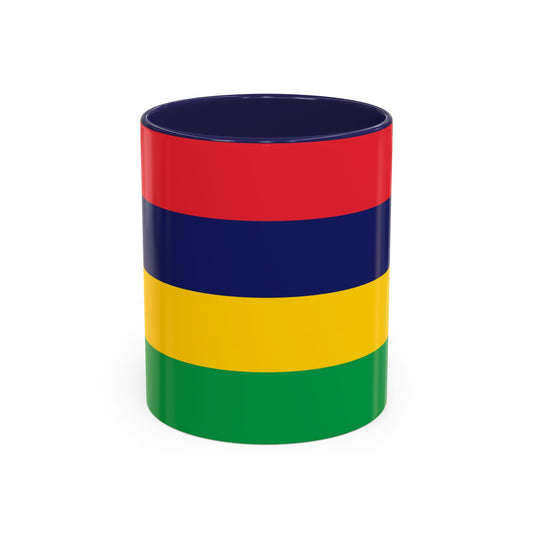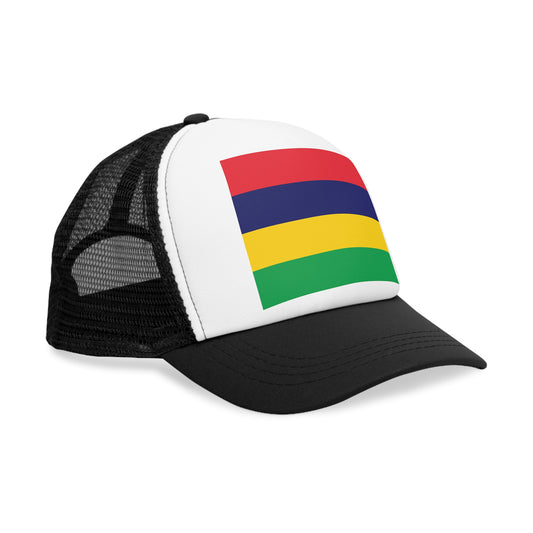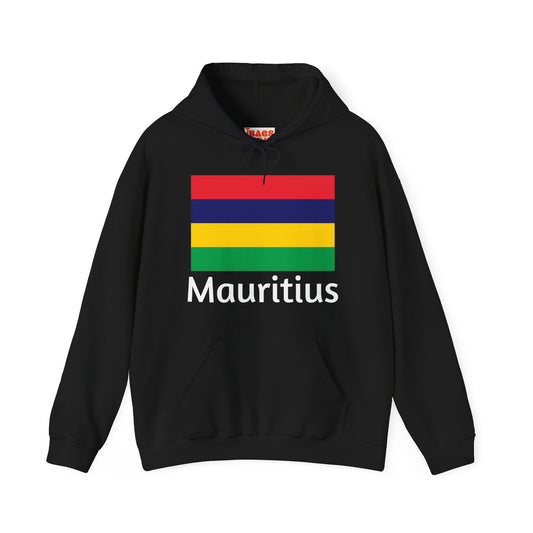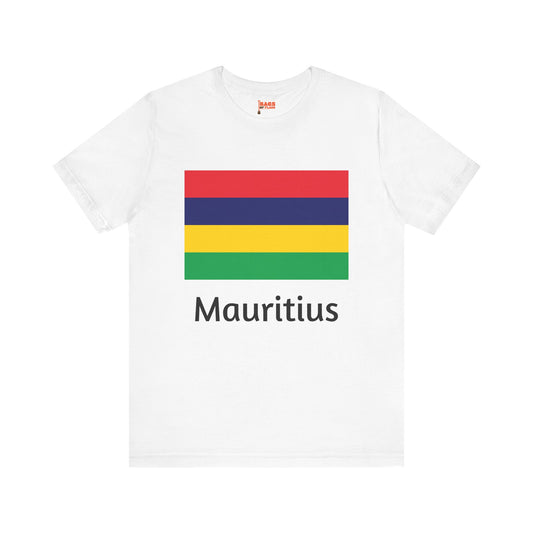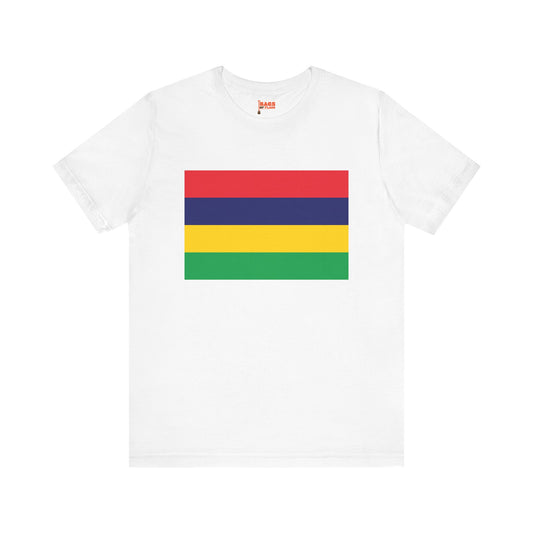-
Mauritius Sweatshirt
Regular price $34.15 USDRegular priceUnit price / per -
Mauritius Flag Sweatshirt
Regular price $34.15 USDRegular priceUnit price / per -
Mauritius Pillow
Regular price $22.65 USDRegular priceUnit price / per -
Mauritius Backpack
Regular price $59.79 USDRegular priceUnit price / per -
Mauritius Leather Patch Hat
Regular price $18.85 USDRegular priceUnit price / per -
Mauritius Mug
Regular price $11.65 USDRegular priceUnit price / per -
Mauritius Trucker Cap
Regular price $14.90 USDRegular priceUnit price / per -
Mauritius Hoodies
Regular price $34.40 USDRegular priceUnit price / per -
Mauritius T-shirts
Regular price $22.79 USDRegular priceUnit price / per -
Mauritius Flag Hoodies
Regular price $34.40 USDRegular priceUnit price / per -
Mauritius Flag on T-shirt
Regular price $22.79 USDRegular priceUnit price / per
Collection: Mauritius
The Mauritius flag symbolizes pride and unity for the people of Mauritius. Its design and colors hold significant meaning, reflecting the history and culture of the island nation. We will delve into the intricate details of the Mauritius flag, exploring its design, historical context, symbolism, current relevance, and additional interesting facts.
Overview of the Mauritius Flag Design and Colors

The Mauritius flag is marked by its vibrant quadruple bands, each with a hue that represents a distinctive aspect of the nation's identity and environment. The topmost stripe, painted in red, bleeds into a serene blue, followed by a radiant yellow, and finally, a verdant green rests at the base. Unlike many national flags incorporating symbols, emblems, or a limited color palette, the flag of Mauritius boldly features these four distinct colors without additional symbols or imagery.
This choice underscores a simplicity that speaks to the island's straightforward yet profound approach to unity and diversity. Each color adds to the flag's aesthetic appeal and weaves together a narrative of struggle, geography, hope, and prosperity. This combination makes the Mauritius flag instantly recognizable and reminds its citizens and admirers daily of the nation’s core values and natural beauty. The absence of the country's coat of arms in the design, contrary to earlier mentioned specifications, emphasizes the symbolic power of the colors themselves, ensuring the flag’s representation is inclusive and symbolic of the entire nation.
Historical Context of the Mauritius Flag
The inception of the Mauritius flag is a testament to the island nation's journey to sovereignty. On the pivotal day of March 12, 1968, as Mauritius emerged as an independent state under the shadows of British colonial rule, a new flag was hoisted to symbolize its newfound autonomy. The adoption of the flag marked a defining moment, representing a collective aspiration for freedom and unity among the diverse communities that inhabit the island.
The selection of the flag's design, with its vibrant colors, was a deliberate choice to encapsulate the multicultural tapestry of Mauritius, aiming to foster a sense of inclusivity and national pride. Over the years, the flag has remained a constant emblem of the nation's identity, untouched by changes, thereby preserving the historical significance and the ideals that led to its creation. This enduring symbol serves as a reminder of the struggles and triumphs associated with the quest for independence and as an emblem of the harmonious coexistence of different cultural heritages within Mauritius.
Symbolism Behind the Mauritius Flag

The Mauritius flag's quartet of colors is a vibrant canvas illustrating the nation's multifaceted identity and aspirations. Each hue carries a deeper meaning, resonating with Mauritius's values and natural beauty. The red band at the top heralds the struggle for freedom and the sacrifices of the nation's forebears, embodying the courage and resilience of the Mauritian people. Beneath the red, the blue stripe envelops the flag, symbolizing the vast Indian Ocean surrounding the island, highlighting Mauritius's geographic identity and historical ties to maritime exploration and trade.
The bright yellow third band casts a glow of optimism, reflecting the nation's hope and bright prospects for the future. Anchoring the flag, the green stripe evokes the verdant landscapes of Mauritius, from its fertile sugarcane fields to its lush mountainous terrains, underscoring the importance of agriculture and the environment to the island's economy and way of life. Together, these colors weave a narrative of unity, progress, and natural harmony, encapsulating the spirit of Mauritius and its people's connection to their land, history, and future ambitions.
Current Relevance of the Mauritius Flag
Today, the Mauritius flag flies high during significant national occasions, exemplifying unity and patriotism among the citizens. It adorns public buildings, schools, and homes, especially during Independence Day celebrations, echoing the country's enduring spirit and communal harmony. In military contexts, the flag symbolizes the nation's sovereignty and honors the service of its armed forces, featuring prominently in parades and commemorative events.
Recently, the flag has also played a central role in social and political discourse. Its presence in demonstrations and public gatherings underscores the democratic values of Mauritius, serving as a beacon for peaceful expression and civil liberties. While its usage in such contexts has sparked debate, these discussions highlight the flag's integral role in the nation's collective consciousness. Far from diminishing its significance, these conversations reinforce the flag's status as a living symbol, adaptable and reflective of Mauritius's evolving landscape. Mauritians continue negotiating their national identity, engaging with the flag in diverse contexts and showcasing its dynamic relevance in contemporary society.
Additional Facts About the Mauritius Flag
Mauritius maintains a distinct set of guidelines regarding the etiquette of flag display and handling. Protocols dictate that the flag must be respected at all times, including ensuring it does not come into contact with the ground. The tradition of raising the flag at the crack of dawn and retiring it at dusk reflects the nation's respect and honor towards its symbol of sovereignty. Interestingly, the flag's design, featuring four horizontal stripes of distinct colors, sets it apart globally as a unique national emblem. Since its official adoption in 1968, the design has stood the test of time, remaining unchanged and continuing to encapsulate the island's values and aspirations.
Among the world's national flags, the flag of Mauritius is noteworthy for its simplicity and the absence of any symbols or emblems, focusing instead on the symbolism of its colors. This makes it a rare minimalist design conveying deep cultural and historical significance. The decision to keep the flag's original design untouched for over five decades underscores a collective commitment to the ideals and unity it represents. Furthermore, the flag's presence in various settings—from educational institutions to international sporting events—reinforces its role as a symbol of national pride and identity, showcasing Mauritius's enduring legacy and vibrant culture to the world.












